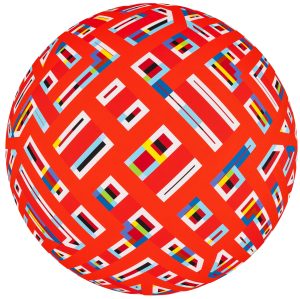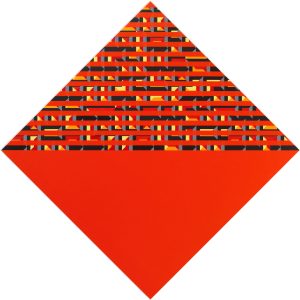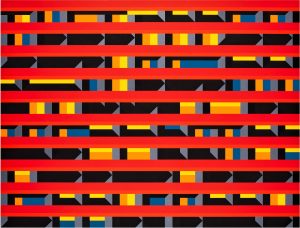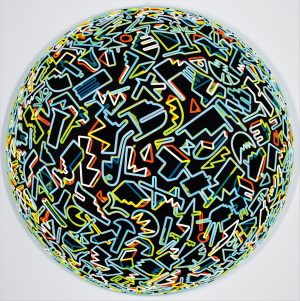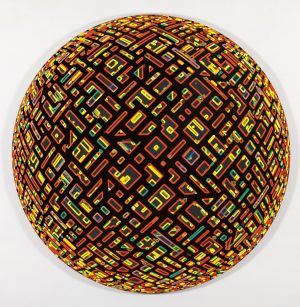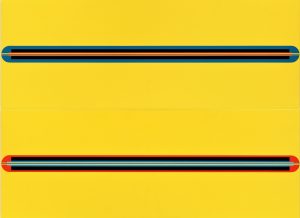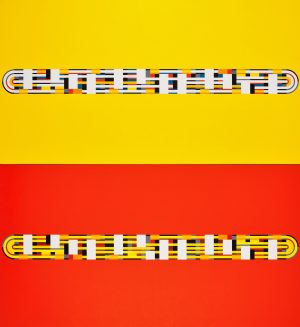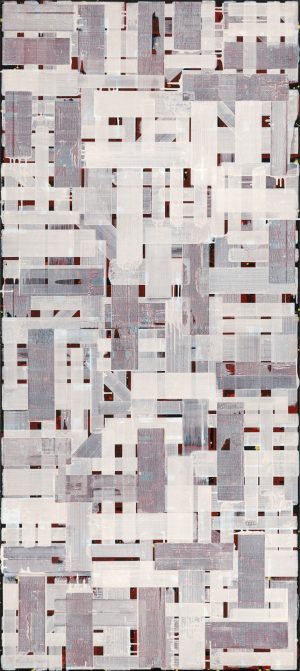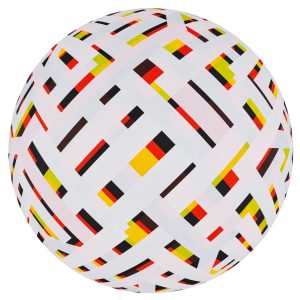
Ádám SZENTPÉTERY
Deformation III.
- Year(s)
- 2009
- Technique
- oil on canvas
- Size
- 190 cm diameter
Artist's introduction
Ádám Szentpétery is a leading figure of the contemporary art scene in Slovakia and a known artist in Hungary as well. He has been making his panel paintings with a consistent geometric programme since the 1980s, but his large-scale public works are also well known. According to Vladimír Beskid, Szentpétery "is an important representative of geometric painting in Slovakia, and has had a decisive influence on its development over the last two decades, also within the wider Central European context. His works result from an "intellectual creation" (František Foltýn's phrase) that provides the essence of mental activity, rational processes and Protestant economy that juxtaposes forms in the pictorial field." Born in Rožňava, Slovakia, Ádám Szentpétery completed his studies in Bratislava in 1982. His career began in the Slovakian scene in the 1980s, where he made a name for himself with his individual interpretation of Neo-Geo. His geometric, playful painting, which utilises vibrant colours, was influenced by cheerful postmodern patterns and the zig-zags of the New Wave. His art drew not on the local Slovakian but on the international and Avant-Garde Eastern European sources of Geometric Abstraction, but he overwrote tradition with ironic metaphors. In his oil paintings of the late 1980s and 1990s, playful elements became dominant, as did collage-like solutions and sometimes fading stripes resembling adhesive tape. Line, symmetry, the compression of space and the emptying of the pictorial field played an essential role in his series that unfolded parallel with each other, taking up the tradition of modernist architecture and Neo-constructivist and Minimalist painting. Repeated bands and geometric shapes indicating three-dimensionality fill the surface of the square-format paintings set on their corners, creating an illusionistic spatiality. His pictorial spaces, built up from homogeneous fields of colour or painterly brushstrokes, are defined by the primary colours of the Mondrian tradition (yellow, red, blue), complemented by tones of white, black and grey. In 2007, his work took on the characteristic circular format, and from then on, he created large-scale tondos interspersed with threads of geometric structures that form a Vasarely-like quasi-space. Szentpétery has taught generations at the Technical University of Košice in the Department of Design and then Fine Arts. Besides his presence in Slovakia, he is also known in Hungary, where he has been awarded the Munkácsy Prize. He lives and works in Rožňava and Košice. Gábor Rieder
More artworks in the artist's collection »





